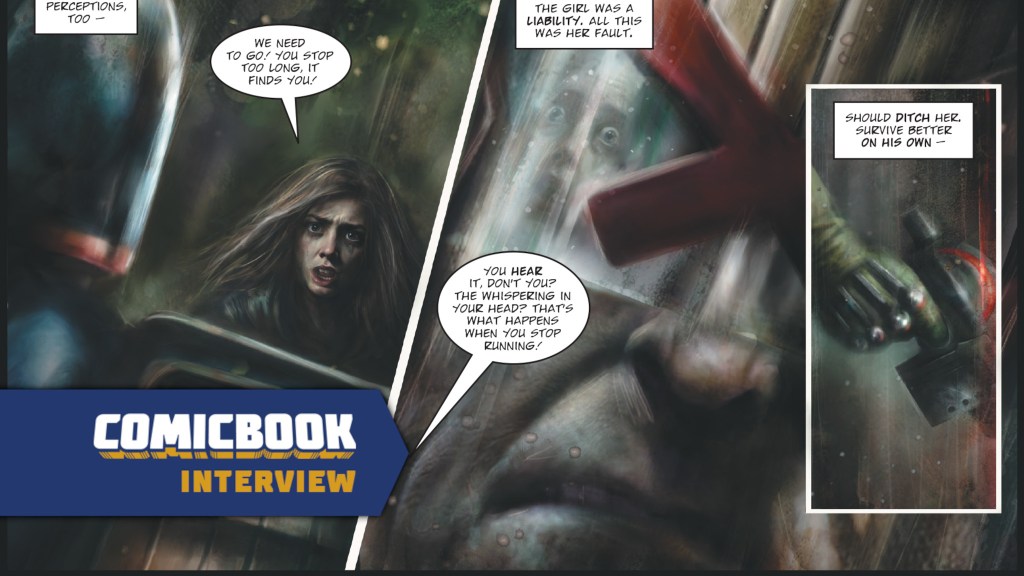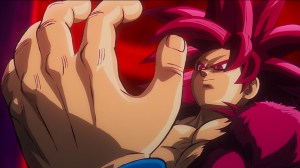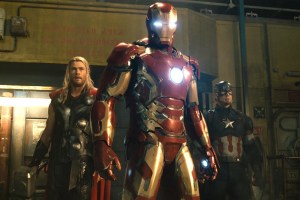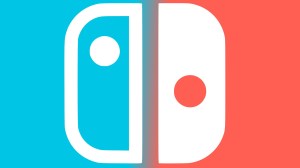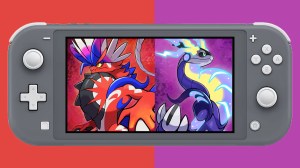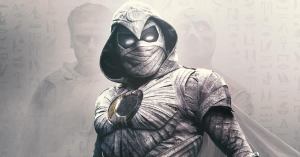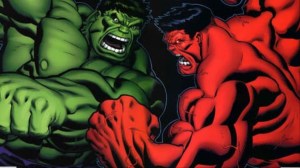Judge Dredd is best known for maintaining a ruthless brand of law and order on the streets of Mega-City One. However, Dredd occasionally ventures beneath those streets to Mega-City One’s undercity, where the strange and supernatural lurk. The new Judge Dredd story currently running in 2000 AD is titled “The Shift” and it’s the latest in a series of stories from writer Ken Niemand and artist Nick Percival that see Dredd going up against threats far more haunting than the typical Mega-City perp. But what is “The Shift” and what lurks in the city’s underbelly waiting for a chance to challenge Judge Dredd?
Videos by ComicBook.com
ComicBook had the opportunity to ask Niemand and Percival a few questions about The Shift.” Here’s what they had to say”
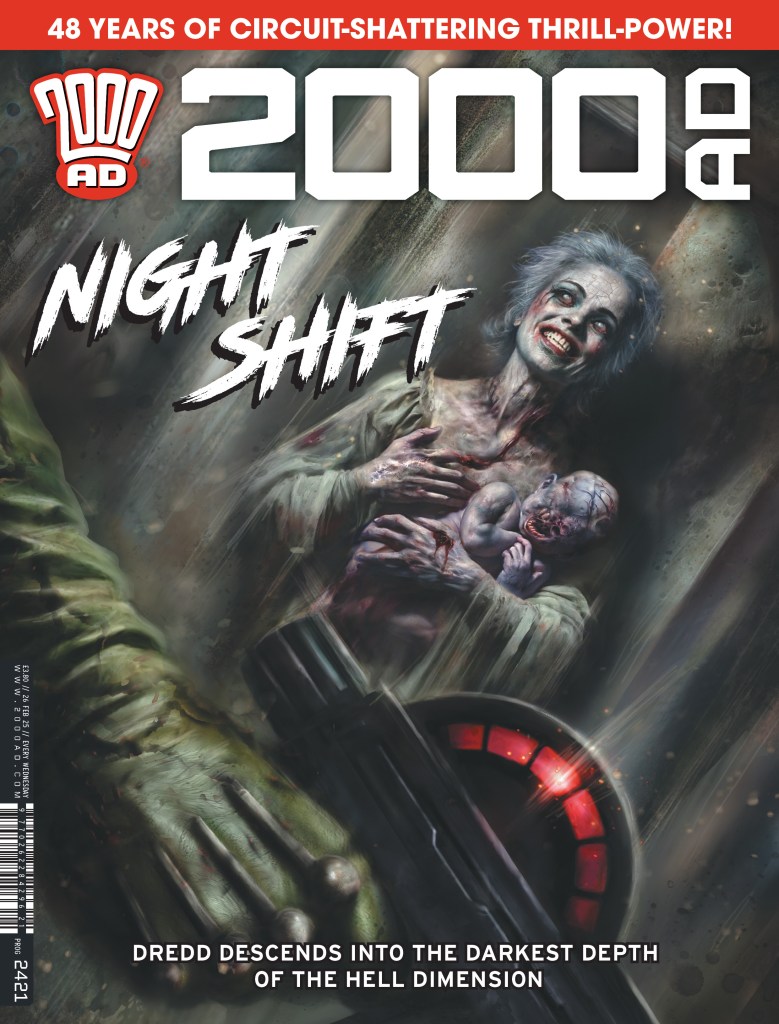
Your new Judge Dredd story is called “The Shift.” What can you tell us about “The Shift,” both the story and concept that gives it its name?
KN: The original working title – which was terrible – was ‘Elevator Ritual’. Because I was doing some research into supernatural memes and crazes – mostly steering in Japan or Korea – that spread among teenagers, and the one that jumped out at me was the Elevator Ritual, where you get into an elevator, travel to certain floors in a certain order. And, if you do it right, it takes you… somewhere else.
One of the themes of my Dredd stories is escape. Mega-City One is such a horrible place that people dream of escaping to somewhere else. Even to whatever is waiting for them on the other side of things like the Elevator Ritual. And that’s how the Shift story was born.
NP: ‘The Shift’ refers to a literal dimensional ‘shift’ that begins to take place in a derelict City block, destroyed from Chaos Day. Dredd investigates the disappearance of a student in this block and after some supernatural shenanigans involving an urban legend and an elevator, ends up trapped in the Shift world– a dark and sinister version of Mega City One, inhabited by all manner of dangerous, twisted creatures with evil intentions.
This is of course, without giving away a lot of the groundwork of the bigger horror elements we’re laying down in this series that will come back to bite Dredd severely in the future.
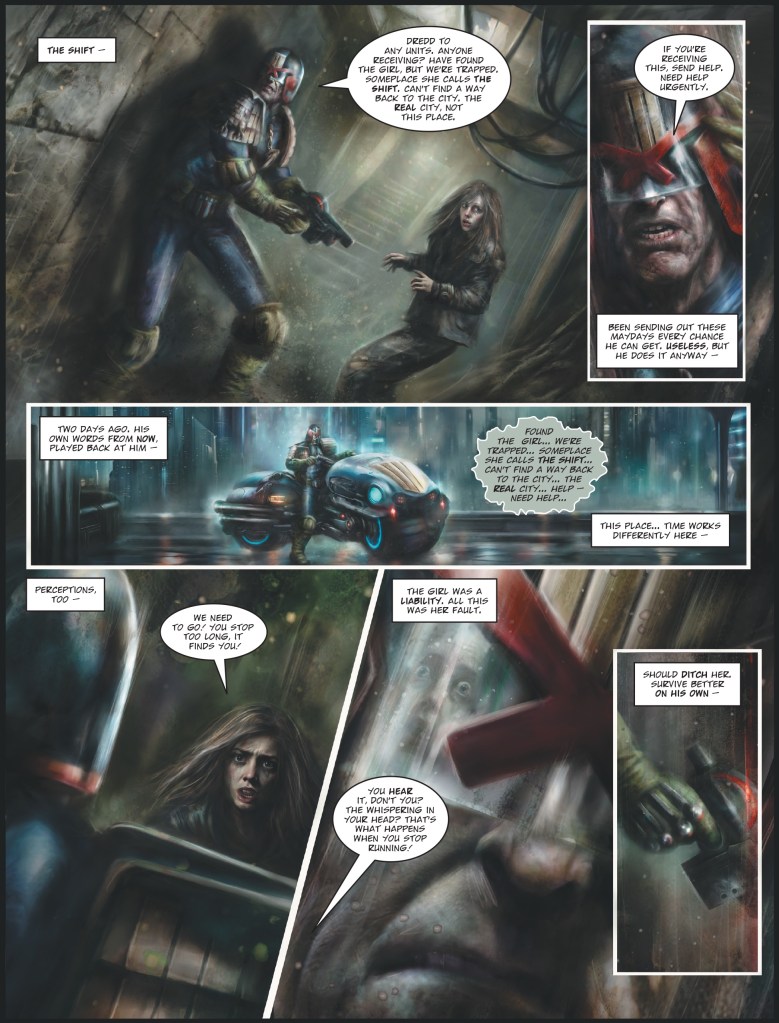
“The Shift” is the latest in a series of supernatural stories you’ve worked on together featuring Judge Dredd. How does “The Shift” build on what’s come in those past stories?
NP: Yeah, it’s linked to ‘The House On Bleaker Street’ and ‘Iron Teeth’ that Ken and I also created. The plan was always to develop this side of Dredd’s world with our own cast of new characters and backstory but with the intention of each tale getting bigger and deeper than the previous one as we build to something truly terrifying for Dredd. ‘The Shift’ expands on this further by showing much more of what’s out there, unseen and lurking in the shadows of Dredd’s world.
There’s a sequence in Part 5 that is very important and establishes some new secret mythology for Dredd and all of the Judges and I can’t wait to come back to that down the line.
KN: The first two were set in Mega-City, but Shift is mostly set somewhere very different. Like Iron Teeth – which was inspired by something that happened in 1950s Glasgow with gangs of kids hunting what they said was a vampire in a city cemetery – it’s vaguely based on stuff in the real world, but the real connection is the character of Marsha Hobbes, who first appeared in Iron Teeth. She’s an academic studying weird Mega-City modern folklore, and she’ll be more and more important as these stories progress.
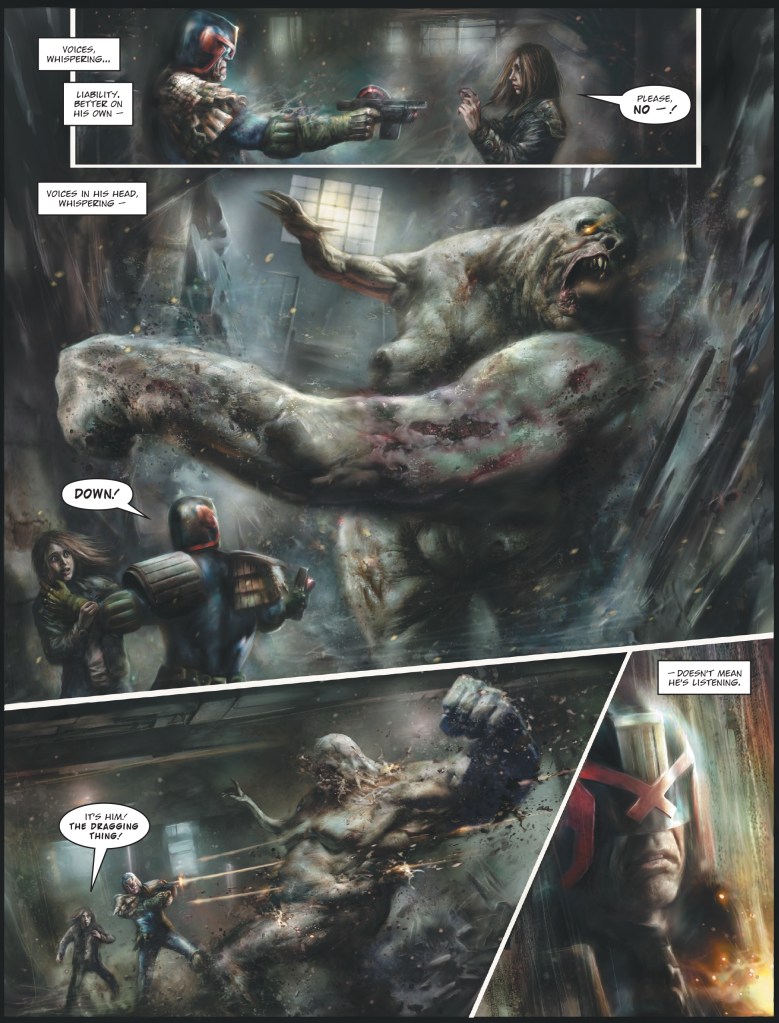
Supernatural elements have been present in Judge Dredd’s stories for a long time, which is interesting given it’s more of a gritty sci-fi universe that Dredd exists in. What opportunities do these supernatural tales offer that a more traditional Dredd story might not, and why do you think they work as well as they do despite the genre dissonance some may assume exists there?
KN: It’s a gritty sci-fi universe… except for all those times when it’s not. When it’s black comedy, or straight-up farce, or a Western, or a war story, police procedural, or ironic commentary, or political allegory. The great thing about Dredd is that the story can switch genre and tone so much, but still be Dredd.
The genre controls can clearly be set to Supernatural Horror – Dark Judges, much? – and that’s what we’re going for with these stories.
NP: I think the supernatural stuff and certainly the horror elements work as nice contrast to the high-tech sci-fi slickness that we’re used to seeing in Dredd stories. It’s refreshing to have scenarios where the judges can’t always rely on the powerful tech of their world, since with many supernatural foes, it’s simply ineffective. It shows a vulnerability in the whole structure of the Judge system.
Obviously, Psi-Judges get their moment to shine in these kinds of stories but I love taking Dredd out of his comfort zone and throwing him into these dark, horror-filled stories where he may have to struggle a lot more to succeed and get out alive.
KN: What I want to do with these stories is build the basis of a new horror mythology for Mega-City. Hence why we’ve got a character who’s an expert on 22nd-century urban folklore.
Shift is a big step forward with this, and some major things are hopefully being set up in it. Watch out for those casually-dropped Easter Eggs…
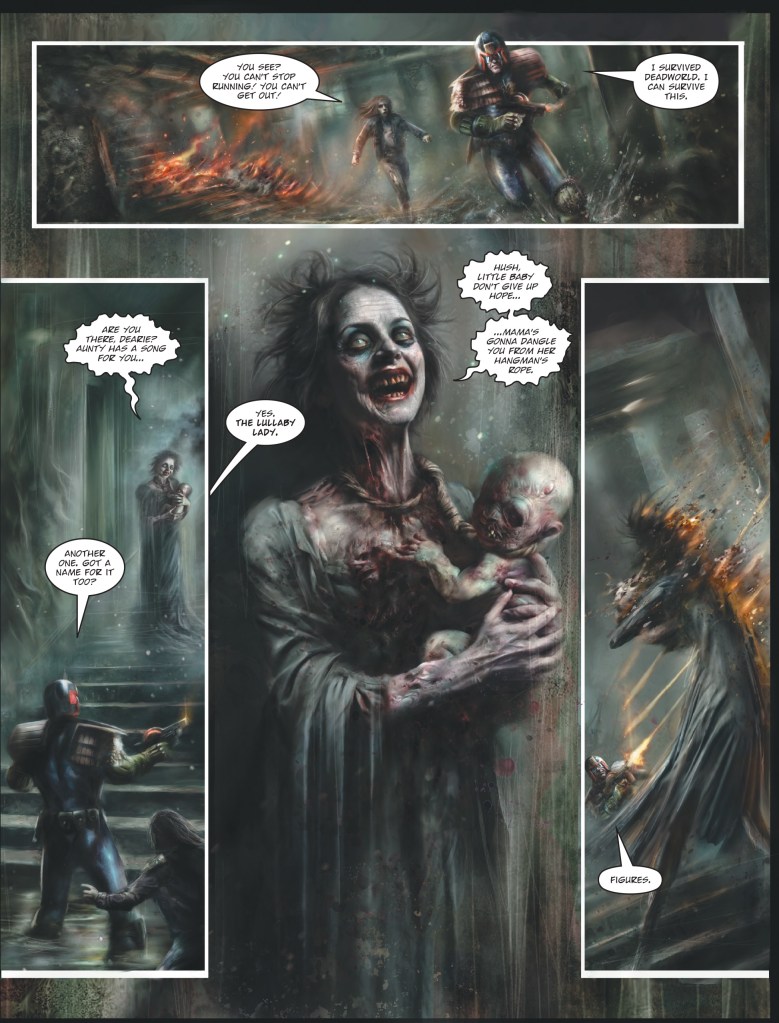
Along with that shift in genre, there’s a shift in visuals. Nick, your art sets the tone for these supernaturally-themed stories in a way where you see the first page and immediately think, “Oh, nice, it’s one of THOSE Dredd stories.” Can you talk a bit about your collaborative process, and what you discussed while coming up with the visual language we see in these tales?
NP: Horror is definitely what I’m known for and I have no problem with that at all. I’ve worked hard with all these tales (including my long stint painting the Dark Judges) to try and world-build with the art, with a lot of detail, textures, and particular attention paid to lighting and creating the mood and atmosphere that these stories demand. I’m always trying out new techniques and since my art is all fully painted, there area lot of visual things I can do to give it that real horror feel, with colour, FX and so on.
I do strive for a cinematic feel to the pages with pacing and the look but still use all the cool things you can only do in comics.
KN: I wanted to make it clear these stories are all a connected piece of something, so Nick’s very distinctive style is perfect for that. I don’t actually have a hugely collaborative process – I tend to play my cards close to my chest; either that or I’m mostly just making it up as I go along – but I drop Nick enough hints about where it might all be going to keep him hooked.
NP: It’s all good fun. Ken and I always chuck ideas back and forth and we both have a lot of love for the same sort of horror material, so we can reference stuff (be it, films, books, games, etc) and we both immediately know what the other one is on about. The three supernatural Dredd’s we’ve now done just feels like scratching the surface of what’s to come, so I’m looking forward to the next one and hopefully, a spiffy collected edition of all this stuff when we’re done. That’s the game plan.
KN: Again… follow those Easter Eggs. The Oubliette. The Black Tower. The Fathers.
“The Shift” continues in Judge Dredd in this week’s 2000 AD Prog 2421, celebrating 48 years of thrill-power.

